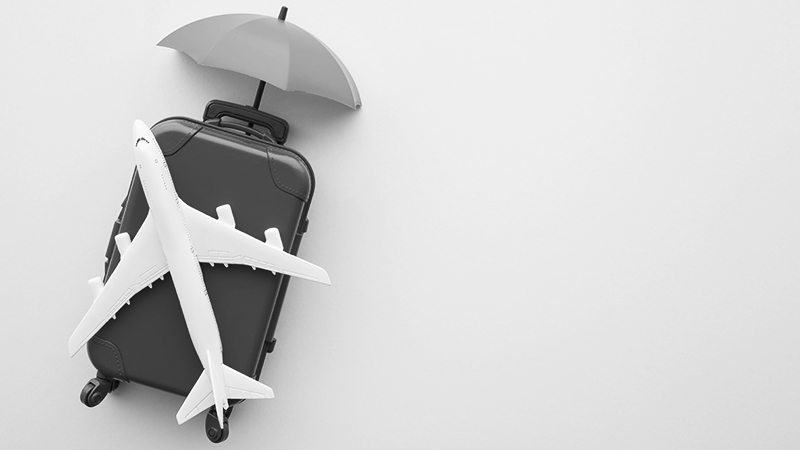
Traveling abroad, whether for business or leisure, brings plenty of tangible benefits to individuals and organizations. Coupled with the convenience of innovative technology at our fingertips, business professionals can achieve a lot if they spend much of their time on foreign shores.
However, despite this digital evolution, traveling abroad can present numerous risks to your data and systems. If you do not take precautions to secure your data - and that of your business’s clients, suppliers, and other employees, which may be stored in the cloud - you could fall victim to a cyber attack. Cybercrime can take many forms, and cybercriminals are becoming more covert and clever in their attack methods.
Protect data integrity while traveling
In the midst of the growing threat landscape and an increasing need to protect sensitive information from more sophisticated cyber attacks, it’s important to recognize that foreign travel presents prime opportunities to target unsuspecting or otherwise innocent travelers.
It’s quite common to be attacked while en route to your destination, and it can take a surprising amount of time to detect such an intrusion, much less to contain a malicious actor lurking in a system. From stolen passwords to compromised devices, the consequences of suffering a cyber attack or breach can be borderline catastrophic and, at worst, damage a business that hasn’t ensured its entire organization is secure.
Cultural differences, language barriers, and behavioral customs can collectively make it harder for travelers to safely protect their data and information as they otherwise would in their native countries. It doesn’t matter whether the international trip is temporary or whether it forms a part of a bigger relocation to an overseas territory, you cannot afford to overlook the security of your data and devices.
Therefore, it’s vital to brush up on your cyber awareness and readiness by understanding the types of risks you could face while abroad, and how to ensure your data remains secure and uncompromised.
7 ways to safeguard your personal data while overseas
Use a Virtual Private Network (VPN)
A VPN is a secure and encrypted network that any international traveler must be familiar with. VPNs enable you to connect to the internet through a server in a different location, protecting your privacy when you send and receive information and anonymizing your online presence.
In the same way that the TLS and SSL protocols encrypt data transferred over HTTP, VPNs do the same by masking where you are requesting the information from, making it nearly impossible for data thieves to seize your information.
By using a VPN, you can protect your online activities from prying eyes, ensuring that your sensitive information remains private. It is particularly important to use a VPN when accessing public WiFi networks, which are often unsecured and vulnerable to hacking.
Avoid public WiFi networks and computers
Public WiFi networks, such as those in airports, hotels, and cafes, are a breeding ground for cybercriminals. These networks are often unsecured and unencrypted, which means that anyone can access them and intercept your data. Browser activities, financial information and transactions can all be intercepted and stolen by a malicious actor.
Instead of using public WiFi, consider using your mobile network or a personal hotspot. Criminals often set up innocuous-looking hotspots with misleading names, and if you innocently connect to these networks, any information you send while connected could be stolen with ease. The attacker could also use other tools to remotely infect your device with malware.
Make it a strict practice to avoid public computers. You do not know what has been installed on these machines, so the safest approach is to just avoid them.
Keep your devices updated
Make sure all of your devices, including smartphones, laptops, tablets, and software are updated with the latest software and security patches. Ensuring that your devices are running on the most current and secure operating systems is critical for protecting them from cyber attacks. These updates often include security enhancements that address exploitable vulnerabilities.
Enable Multi-Factor Authentication
Multi-Factor Authentication (MFA) is an additional layer of security that requires you to verify yourself in addition to your username and password in order to access your accounts.
Common forms of MFA include sending a One-Time Password (OTP) to your email client, push notifications, text messages, phone verification, biometrics, or facial recognition prompts.
Make sure you enable MFA on any device or software that supports it. It ensures that no unauthorized access will be granted to anybody, even if your password is compromised. In fact, MFA can act as an early warning system to let you know that your password has been revealed. If you receive an MFA notification when you are not logging into a system, it means that your credentials have been compromised. Under no circumstance should you respond to an unsolicited MFA notification, nor should you ever share MFA codes with anyone, no matter how convincing they sound.
Create strong passwords
Many people are guilty of using the same password for multiple logins and devices, not realizing the inherent danger that exists with such a practice. Using strong and unique passwords for each device or login is one of the most effective ways to protect your accounts. A manageable solution is to use a password manager and generator tool to make it easy to create and store your various passwords.
Be cautious of phishing scams
Phishing is a technique used by cybercriminals to trick you into revealing your sensitive information, such as your password or other sensitive information. These scams often come in the form of an email or text message that appears to be from a legitimate source, such as your bank or a government agency. While most phishing scams are becoming more difficult to detect, there are still a few that should make most folks laugh:

To avoid falling victim to phishing scams, always be cautious of unsolicited emails and text messages, and never click on links or download attachments from unknown sources.
Enable Find My Device or Find My iPhone Features
Find My Device is a feature available on most Android smartphones, with the Apple equivalent being Find My iPhone, which enables you to locate your device if it is lost or stolen. By enabling this feature, you can remotely lock your device, erase its data, or track its location, which can help to prevent criminals from accessing your sensitive information.
The consequences of cybercrime while traveling abroad can be pretty devastating. If your device falls into the wrong hands, your clients or customers could also be at risk, depending on the extent of the data that is obtainable. Therefore, taking some simple preventative steps will go a long way in safeguarding important, business-critical information.
About the Author:

Chester Avey has over 10 years of experience in cybersecurity and business management. Since retiring he enjoys sharing his knowledge and experience through his writing.
Twitter: @ChesterAvey
Editor’s Note: The opinions expressed in this guest author article are solely those of the contributor, and do not necessarily reflect those of Tripwire
Meet Fortra™ Your Cybersecurity Ally™
Fortra is creating a simpler, stronger, and more straightforward future for cybersecurity by offering a portfolio of integrated and scalable solutions. Learn more about how Fortra’s portfolio of solutions can benefit your business.

